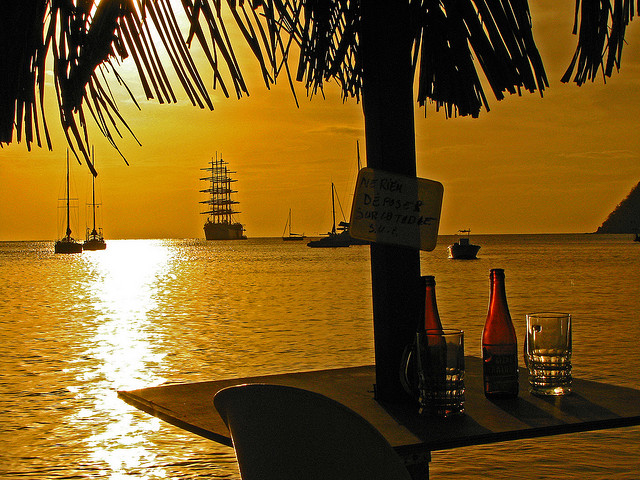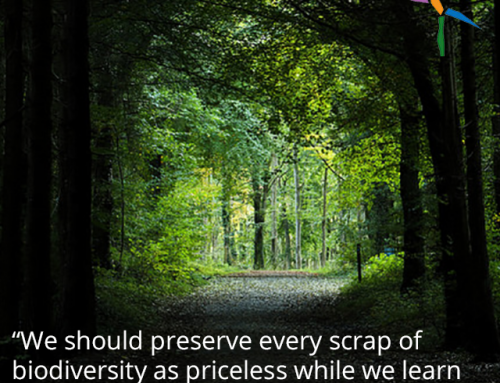July is the heart of travel season, and it’s when we at Postconsumers like to focus on giving tips for effective eco-travel. By default, any vacation you take can leave its carbon footprint on the planet. This month, we’ve tried to give you some information on how that happens as well as some places where the focus is on green practices so that you can counterbalance some of that carbon impact. Today, we’re giving you ten ways that you can reduce away the stamp of your foot while you’re on vacation. We think vacations are an important part of life. They give you valuable time to regroup, relax and perhaps most importantly explore the world. But you may be surprised how much of an impact it could have if we all made ten or so tiny changes to how we travel.
Three Tips for Being More Hotel Eco-Friendly
Eco-Travel Tip Number One: Choose Your Hotel Wisely
These days, even many budget hotel chains are taking green initiatives. With some basic internet research (or even, gasp, calling and asking on the phone), you can find hotels that take energy and water saving measures seriously. As we discussed in our article on Ways Your Carbon Footprint Adds Up When You Travel, because of the large capacity of people at most hotels and the way it’s often a mindset to not think as much about conservation when you’re on vacation, how hotels manage their energy and water sources can make a significant impact.
Eco-Travel Tip Number Two: Beware the Hotel Sample Sizes
For that matter, beware any “travel-size” products you buy. The smaller the packaging, the more wasteful the packaging. And when it comes to the small, sample-sized products in hotels, most of them are not going to a recycling destination (though we love this program for recycling used hotel small soaps). We understand that with current airline restrictions and the massive charge for checking baggage, you probably want to take grooming products in smaller bottles. You are ahead of the game both in an eco way and in a financial way if you simply buy small travel-sized bottles and transfer product from your larger bottles at home into them before you take off.
Eco-Travel Tip Number Three: Take Advantage of Green Linen Initiatives
Almost every hotel now offers you the option to not have your towels and sheets washed every day. One of the greatest carbon footprint offenders of most hotels is the water and energy used to wash a full set of towels and linens for every room, every day. We know it feels good to come back to fully clean towels and sheets in your hotel room, but is it necessary? You don’t swap out your towels and sheets for clean ones every day when you’re at home, so why would you do it when you’re on vacation?
Three Eco-Travel Tips for Reducing Your Carbon Footprint On the Road
Eco-Travel Tip Number Four: Don’t Drive!
We’re not going to pretend like planes, trains, buses and boats don’t have a carbon footprint all of their own, but the overall carbon footprint is always reduced when more people travel in one vehicle. If finances allow it (and we know it’s often more affordable to drive), opt for some type of “group transport.” Yes, a plane burns an enormous amount of fuel. It’s still less than if each individual person drove their car from one side of the country to the other.
Eco-Travel Tip Number Five: Don’t Be Afraid to Walk, Bike or Take Public Transportation in Your Destination
The point of traveling to a place is to experience it. Rather than driving around your destination in a car looking out of the window at things (or, worse yet, not looking at them at all because you are the driver), opt for other choices. Walk to places that are within walking distance. Take a bike tour of your new location (or a guided walking tour). If you’re lucky enough to be in a city with robust public transportation, use it and get the experience. Not only will you reduce your carbon footprint and experience more, but you’ll likely decrease the stress level of whomever was assigned to drive as well.
Eco-Travel Tip Number Six: Try to Rent Eco-Friendly Cars
If you’re in a destination where you need to rent a car to get around, skip the SUV and opt for smaller, more fuel efficient cars. Most car rental agencies aren’t stocking hybrids or electrics yet, but you can usually find something that scores high on the overall eco-scale. We also completely understand if you are in a snow environment and rent an SUV for safety – every vehicle has its place.
Four Eco-Travel Tips for an Overall Green Vacation
Eco-Travel Tip Number Seven: Pick Your Destination Wisely
We are certainly not suggesting that you limit your vacations to camping or eco-travel destinations only (though both are amazing ways to spend your time). But making decisions about where you go can be one of the larger ways in which you support or fight against waste and pollution. There’s no way around the fact that theme parks and amusement parks create massive carbon footprints. So do many “tourist driven” locations. Do some research, get creative and look for locations that rely a little less heavily on huge energy needs for massive tourist populations.
Eco-Travel Tip Number Eight: Be Creative with Souvenirs
This is one of our favorite topics at Postconsumers and we’ve actually put together a large section of ideas and advice right here. We completely understand (and embrace) wanting to bring a memento of your trip back with you. But the reality of the situation is that most souvenir shops or stands are just as bad as big box stores when it comes to wastefulness, carbon footprints and even social issues with manufacturing. There are plenty of fun and creative ways to create a vacation souvenir that will not only avoid harming the planet, it will actually honor it. If you’ve got some reading time, the article we linked to above is one of our favorites and we think it will inspire you.
Eco-Travel Tip Number Nine: Pack a Lunch
When we travel, we all tend to get more takeout food than normal. We’re on the road, it’s convenient and for many of us it’s an unhealthy luxury that we don’t indulge in that often. However, takeout food comes with takeout packaging, which is often incredibly wasteful. Particularly in the types of places you may get takeout from on vacation, often roadside, you’ll see a great deal of Styrofoam. Make sure that you’ve got a cooler of drinks and snacks so that you can avoid carbon footprints from takeout packaging (and also probably save yourself some money and some indigestion).
Eco-Travel Tip Number Ten: Don’t Fall Into the “Throw It Out Trap”
You wouldn’t just throw out a plastic water bottle at home, so why would you do it on vacation? We’ll tell you why. Because many vacation destinations don’t have easy and accessible recycling bins like we’re sure that your home does. But chances are that you’re carrying a backpack or larger bag with you during your travels. Save up your obvious recyclables and then take them home with you where you can properly make sure that they go back into the production line!
Did we miss a way to minimize the impact of your vacation carbon footprint? Tell us about it on the social media channels below.
Facebook | Twitter | Instagram | Tumblr | Pinterest | Google+
Photo Credit: Ziv Turner via Flickr





